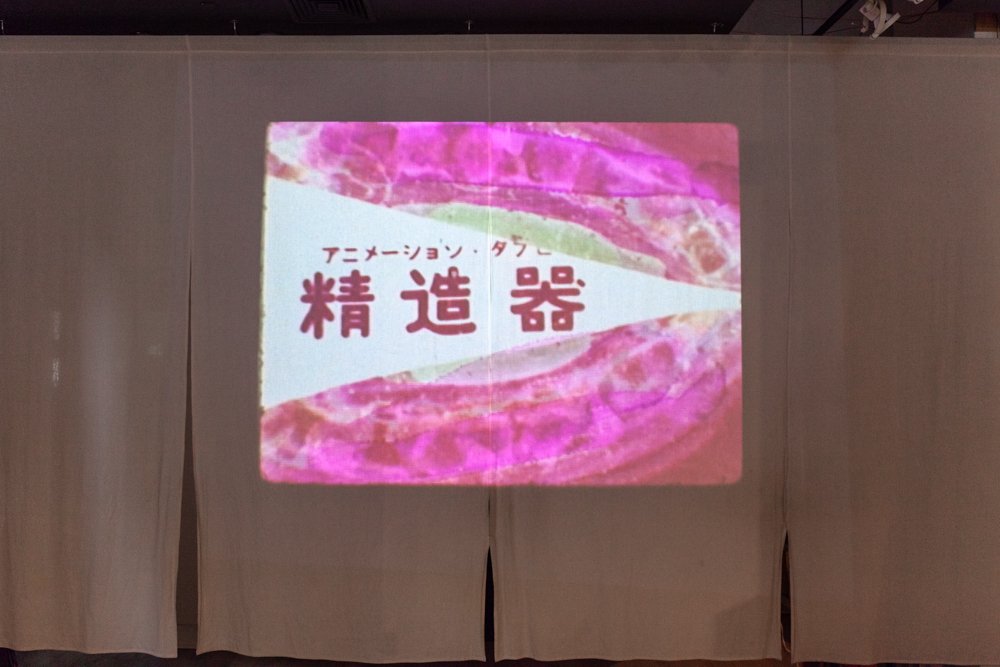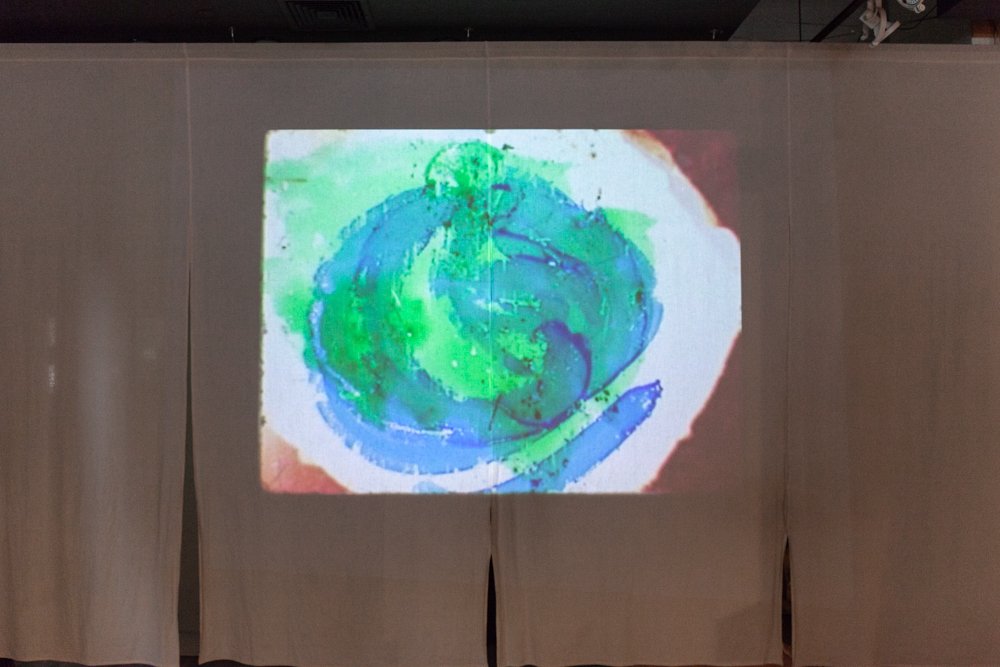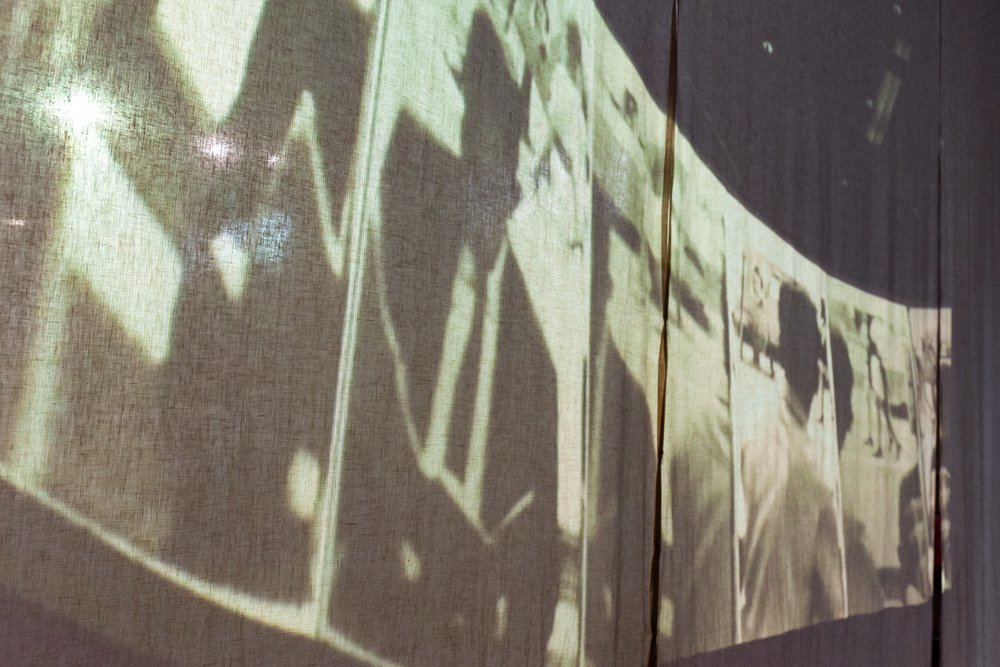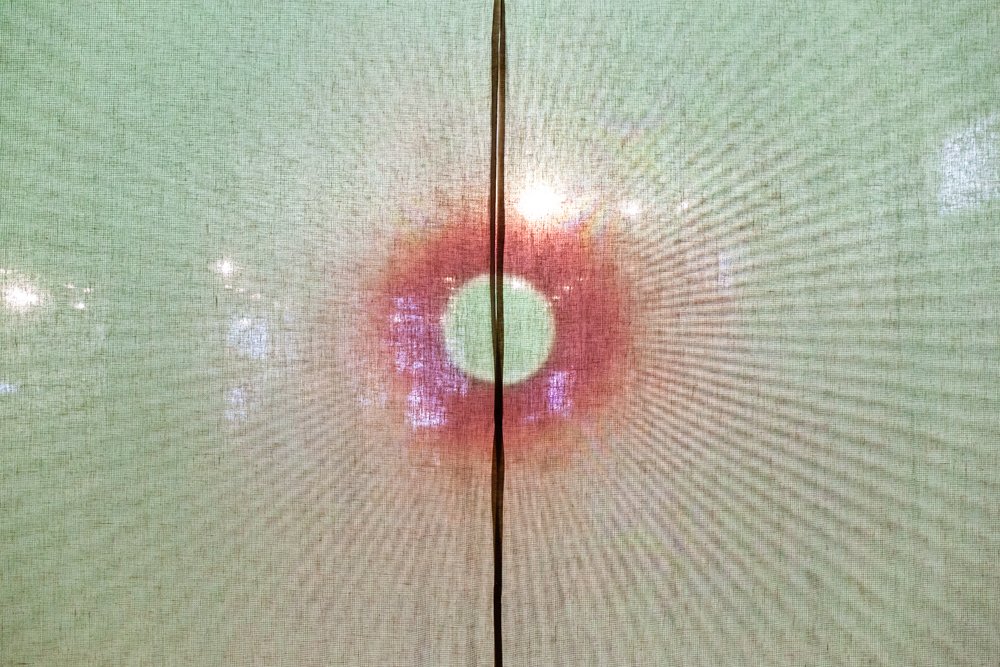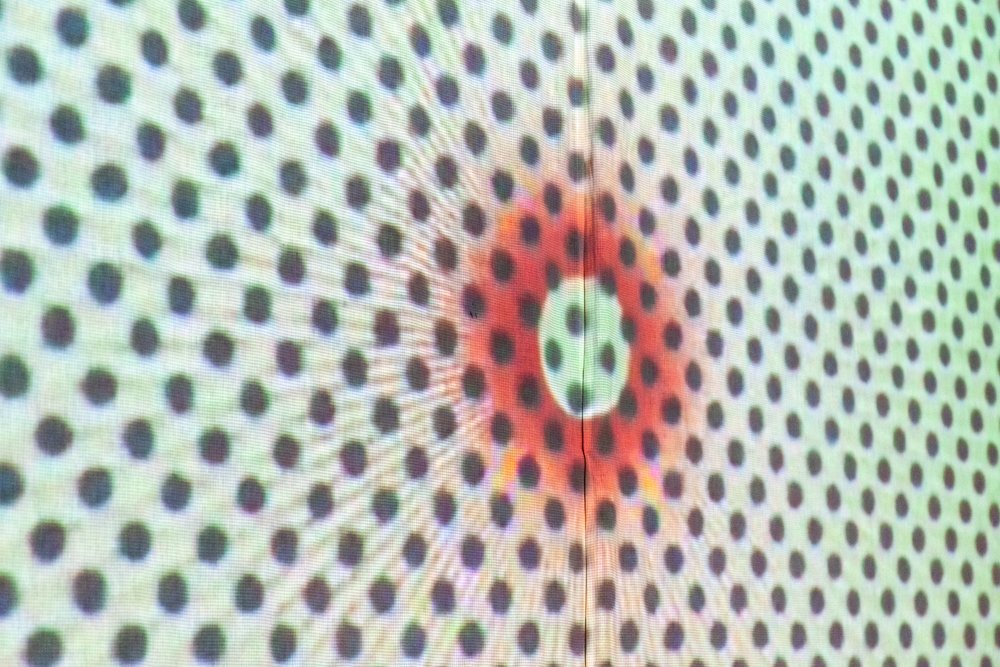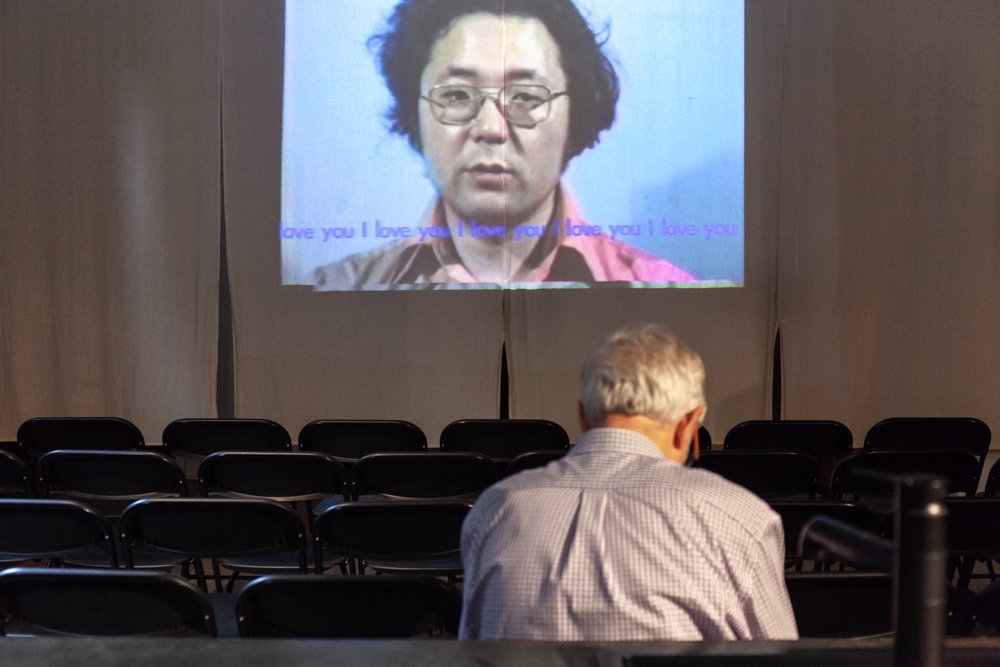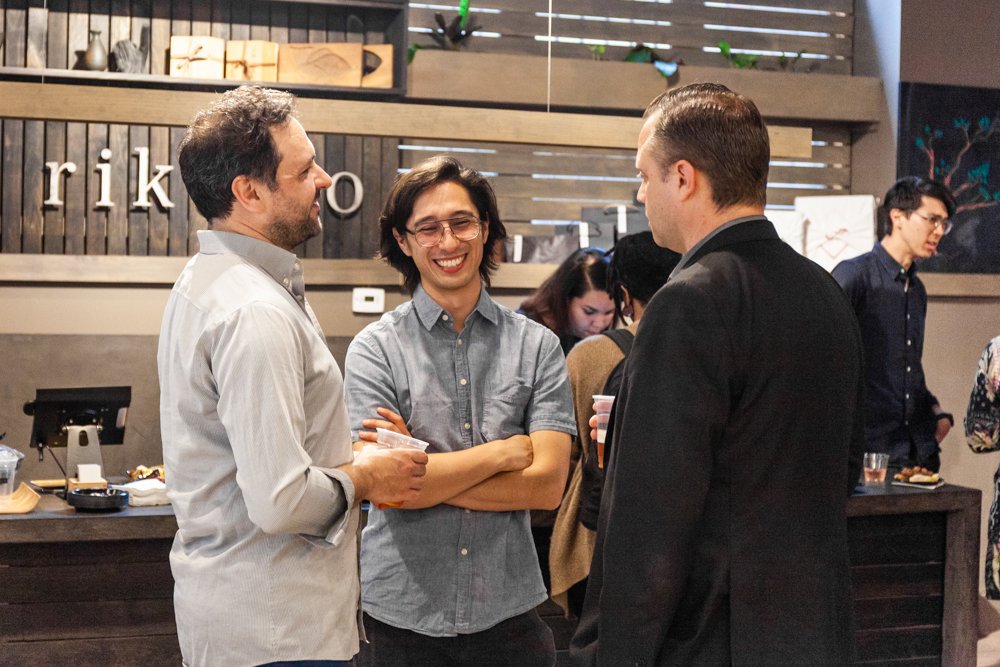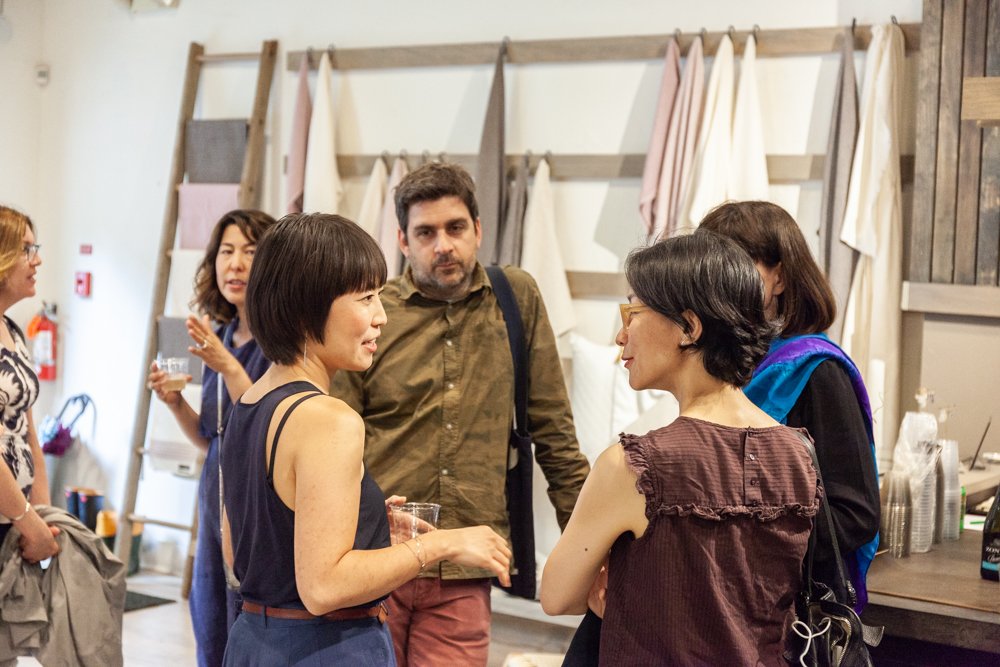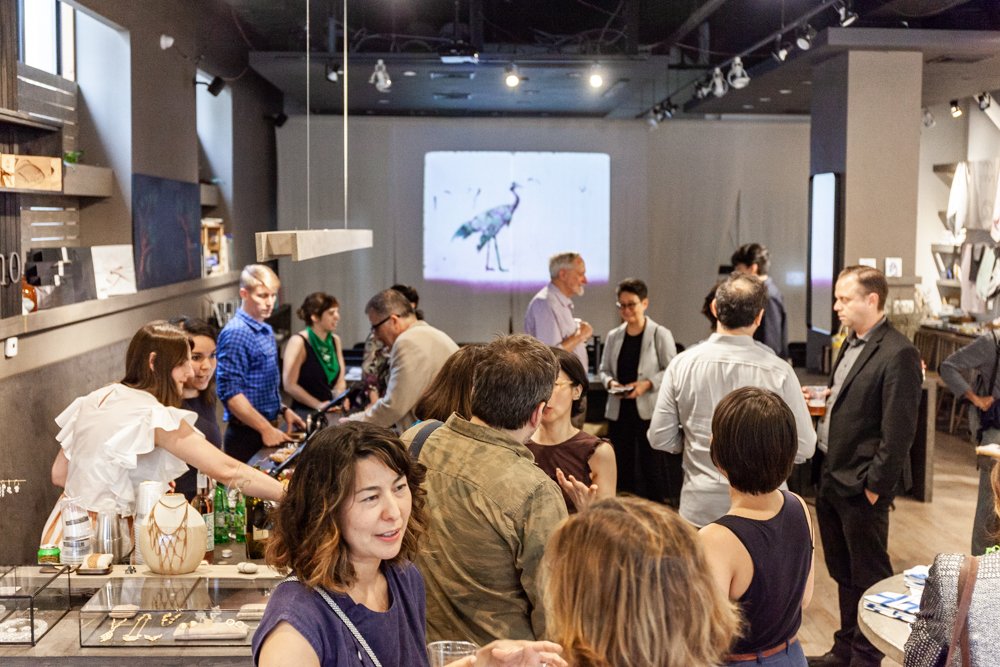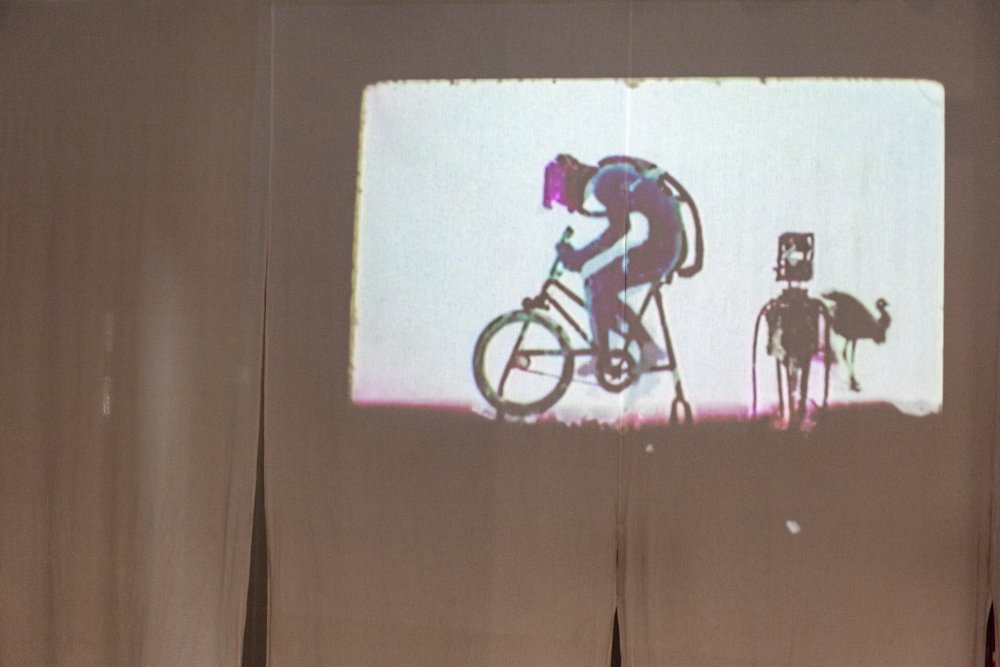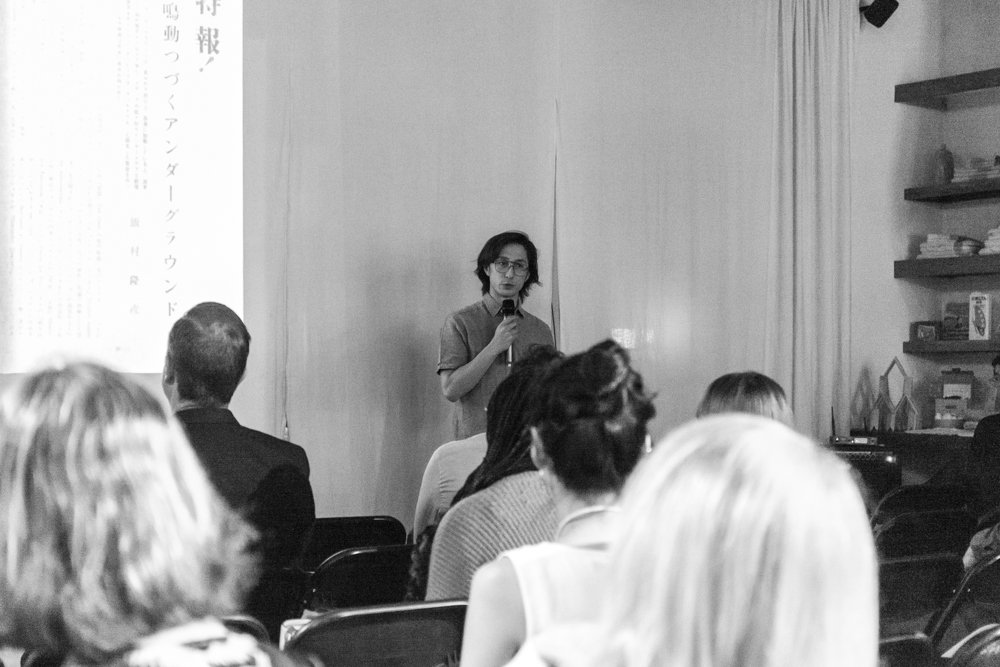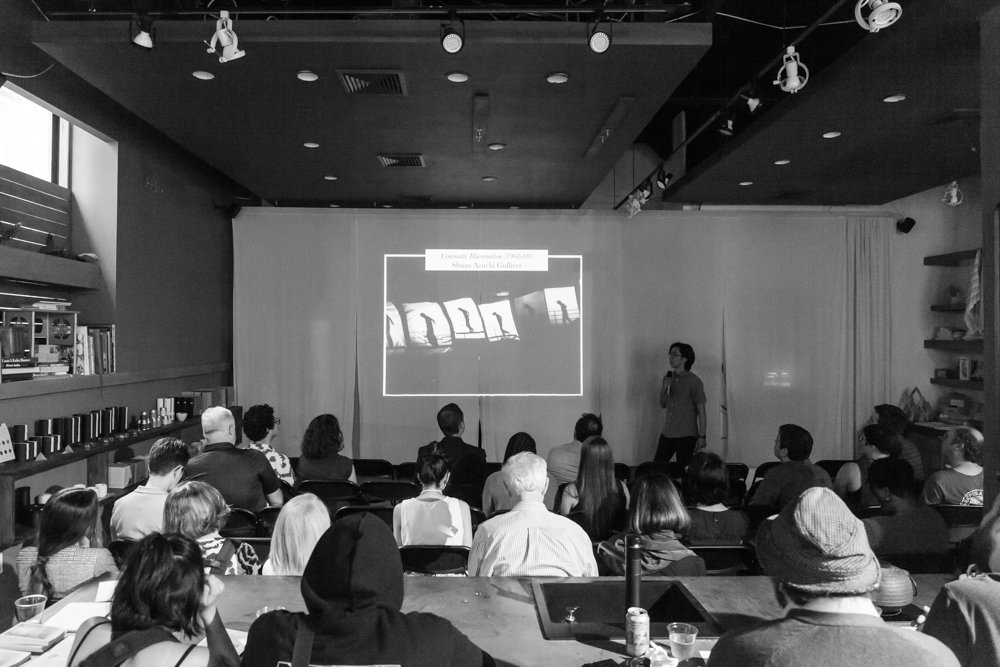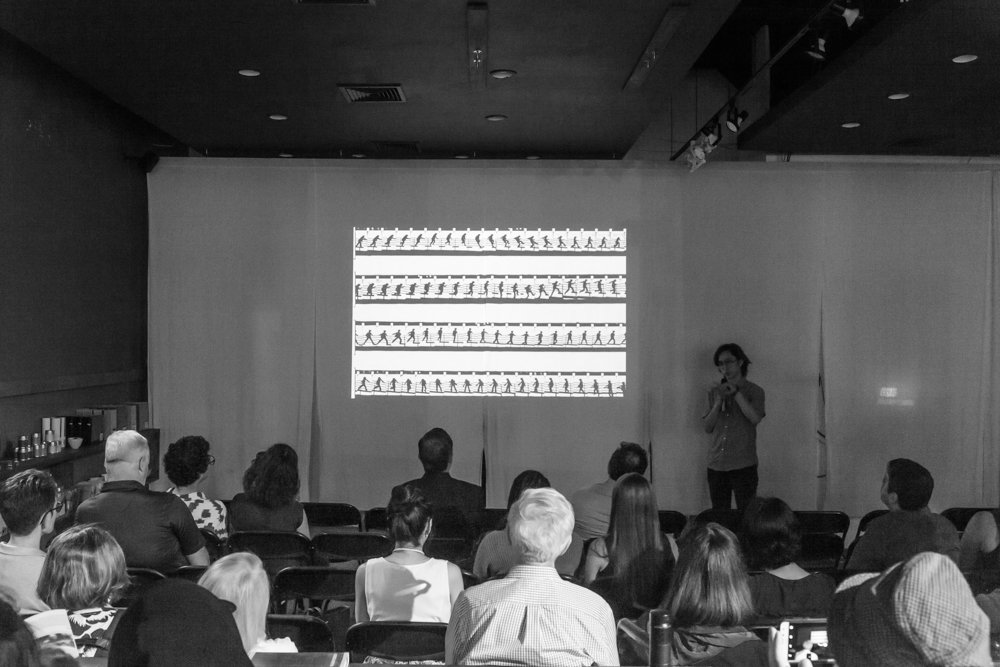Wednesday June 13th, 2018
Rikumo: 1216 Walnut St, Philadelphia, PA 19107
6:00pm | CCJ Viewing Program and Reception
7:00pm | Short lecture on Japanese Expanded Cinema by Julian Ross
RSVP
CCJ is pleased to partner with Rikumo to celebrate Japanese experimental film and video works with the audiences in Philadelphia, and to welcome Julian Ross, curator at International Film Festival Rotterdam and Postdoctoral Fellow at University of Westminster, as well as co-researcher of CCJ's Japanese Expanded Cinema project. The Preview Program on digital loop will highlight the works and artists CCJ have thus far committed to research, preserve, and present. The short lecture by Julian Ross will introduce the wide-ranging moving image experiments of the Japanese expanded cinema movement of the 1960s and 1970s.
CCJ Preview Program (on loop)
Keiichi Tanaami, 4 Eyes, 1975, 9 min, color, sound. Courtesy the Artist and Nanzuka Gallery.
Takahiko Iimura, I Love You, 1973–1987, video, 4:40 min, sound. Courtesy the Artist.
Ko Nakajima, Seizoki, 1964, 16mm, 4:10 min, sound. Courtesy the Artist.
Ko Nakajima, Biological Life Part 1, 1971, film processed in video, 6 min (3 min excerpt), sound. Courtesy the Artist.
Shuzo Azuchi Gulliver, Installation View of Cinematic Illumination, 1968-1969, 18 slide projectors, 3 min, sound. Courtesy the Artist and Tokyo Photographic Art Museum.
Julian Ross is a Research Fellow on a Leverhulme Postdoctoral Fellowship at the Centre for Research and Education in Art and Media at the University of Westminster, United Kingdom, where he is currently researching contemporary uses of the slide projector. His PhD entitled ‘Beyond the Frame: Intermedia and Expanded Cinema in 1960-70s Japan’ was completed at the University of Leeds on a White Rose Research Studentship in 2014. He is a short film programmer at International Film Festival Rotterdam (2015-) and a freelance curator of film programmes, performances and exhibitions. He has curated films and performances at Tate Modern, BFI, Eye Film Institute, Anthology Film Archives, Yerba Buena Center for the Arts and other institutions. He was an assistant curator for a film series on the Art Theatre Guild of Japan (ATG) at MoMA and Pacific Film Archives.
Top Image: Still image from Ko Nakajima, Anapoko, 1963, 16mm, 7:00 min. Courtesy the Artist.
CCJ Viewing Program
1. Keiichi Tanaami, 4 Eyes, 1975, 9 min, color, sound
Drawing from the culture of psychedelia and discotheques he participated in, Keiichi Tanaami’s 16mm double projection film is comprised of images of printed material from which he enhances the halftone dots. This is intended as a side-by-side projection of two prints of the same film, one projected with a delay of a few seconds.
Starting out as a successful graphic designer in 1960s Japan, Keiichi Tanaami explored the medium of film and animation starting in 1965. Employing psychedelic, colorful and kitchy imagery, his work is representative of Japanese Pop Art.
2. Takahiko Iimura, I Love You, 1973–1987, video, 4:40 min (3 min excerpt), sound
Many of his conceptual investigations involved performance on camera, such as that captured in I Love You (1973–1987), on which he collaborated with his wife, Akiko Iimura.
Deeply involved with avant-garde art movements of the 1960s, Takahiko Iimura formed the experimental film group Film Indépendant with Nobuhiko Obayashi, Yoichi Takabayashi, Donald Richie, and Koichiro Ishizaki in 1964. In 1966 he moved to New York where he was influenced by the underground film scene. In 1969, Iimura shifted to video art, holding solo shows and performances at the Museum of Modern Art, New York in 1974 and the Whitney Museum in 1979, and gaining an international reputation as a video artist.
3. Ko Nakajima, Seizoki, 1964, 16mm, 4:10 min, sound
As a recent graduate of Tama Art University in the early 1960s and with no art production funds, Ko Nakajima invented a method of animation, “kaki-mation” (writing-animation), in which he directly drew onto film. Seizoki (1964) uses this method, which he presented between screenings at the Sogetsu Art Center, a space for avant-garde art in 1960s Tokyo.
Crossing multiple mediums and genres, Ko Nakajima is a video art pioneer, filmmaker, documentary photographer, and media artist. He started experimenting with making animation in 1964, and moved on to using portable video in the early 1970s to produce solo video art works and collective work with Video Earth Tokyo. Not only using video as a documentation tool, Video Earth Toyo is one of very few collectives in Japan that attempted to cablecast their work. His photography documents important Japanese artistic movements such as the work of Mono-ha and others.
4. Ko Nakajima, Biological Life Part 1, 1971, film processed in video, 6 min (3 min excerpt), sound
One of Nakajima’s consistent interest for documenting life is represented in Biological Cycle. Starting with the first of the series in 1971, a 16mm film shot in a studio with his family members and bird as the subject, the work incorporates added effects as the series progress, including the transformation of the work into video format, and digital effects using “Animaker,” a device devised by him.
5. Shuzo Azuchi Gulliver, Installation View of Cinematic Illumination, 1968-1969, 18 slide projectors, 3 min, sound. Courtesy Tokyo Photographic Art Museum
Staged at discotheque Killer Joe’s (Tokyo) during the Intermedia Art Festival in 1969, this immersive, large-scale installation involves 18 automatic slide projectors, illuminating 360º of the surrounding walls with waves of words, color, and shadows. Cinematic Illumination encompasses a technological rigor that represents the explosive creativity of the time, while also embodying transformative elements that allow today’s audience to see into the cultural and political negotiations that swept 1960s Tokyo.
Born in 1947, Shuzo Azuchi Gulliver is an artist working in the mediums of sculpture, prints, photography, performance, and installation. Gulliver was involved in experimental performances and events that marked illustrious Japanese 1960s event-based artistic practices, most notably with his involvement with the collective Play. His work has been frequently shown in Holland, Italy, Germany, U.K., and other Western European countries, as well as in Japan.
Julian Ross is a Research Fellow on a Leverhulme Postdoctoral Fellowship at the Centre for Research and Education in Art and Media at the University of Westminster, United Kingdom, where he is currently researching contemporary uses of the slide projector. His PhD entitled ‘Beyond the Frame: Intermedia and Expanded Cinema in 1960-70s Japan’ was completed at the University of Leeds on a White Rose Research Studentship in 2014. He is a short film programmer at International Film Festival Rotterdam (2015-) and a freelance curator of film programmes, performances and exhibitions. He has curated films and performances at Tate Modern, BFI, Eye Film Institute, Anthology Film Archives, Yerba Buena Center for the Arts and other institutions. He was an assistant curator for a film series on the Art Theatre Guild of Japan (ATG) at MoMA and Pacific Film Archives.
This program is made possible by the support from the participating artists and grants from the Philadelphia Cultural Fund, Pennsylvania Council on the Arts, Preserving Diverse Cultures grant, as well as support by the Flaherty Seminar.



